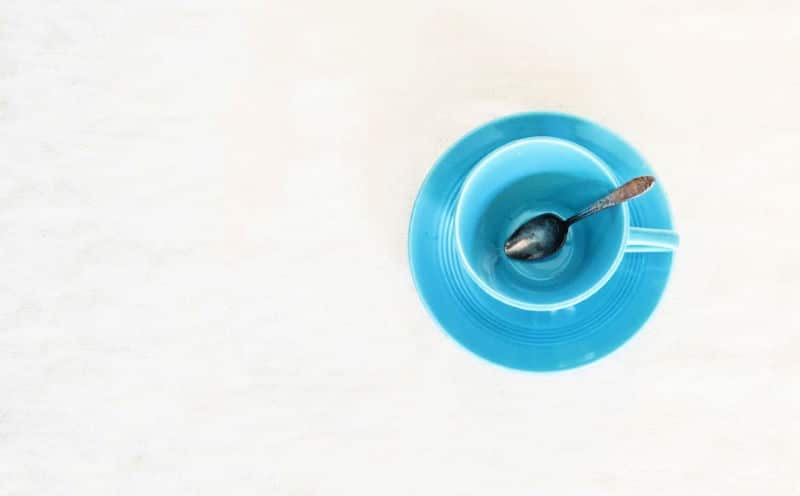Careful, now, before you dive in: there’s a thread of coherent thought here, but there’s quite a few cross-threads as well… (it does make a tapestry if you turn it around and stand back, I’m pretty sure of it).
1. Dunbar’s Number
Last year my friend Haley introduced me to the concept of Dunbar’s Number, a term coined by anthropologist Robin Dunbar in the 1990s. I’ll spare you the science-y details, but basically, he hyphothesized that humans can have about a max of 150 people in their social sphere.
Humans seem to have a natural limit to the number of meaningful relationships they can have. Furthermore, these relationships are layered: most people thrive with about five people in their closest layer, then the next layer holds about 10 people — one step lower than our closest relationships.
After that, the layers go from five, then 15, 50, and then finally, 100 people. So, about 150 people max in our lives with whom we have a meaningful relationship.
This is so interesting to me, especially in our social media-obsessed world. Are we able to not only give our best focus to those 150 people in our lives, but do we even know who they are? 150 sounds like plenty of people, but when you start counting friends, family, extended family, neighbors, coworkers, fellow students, and interactions with waiters, mail carriers, flight attendants, cashiers, and store owners? It makes me wonder what happens when we prioritize our relationships found primarily through the screen.
2. Iceland

I wish I could remember on which podcast I heard the genius Seth Godin reference this, but the words he used have stuck with me years later. He was asked about the idea of a thousand true fans (in case you’re unfamiliar with him, his niche is permission marketing, and how to break the mold of old-school business). He replied with a personal story: One time he was about to give a speech in Iceland, and was disappointed initially in the size of the crowd (I forget the actual number of people). But then he did the math and realized the people in the auditorium equaled roughly one percent of the entire country.
Everything has to do with perspective, he said. In our digital world, where “enough” is never enough (you could always have more Instagram followers, you could always answer more email, you could always get more work done because of the device in your pocket), it’s easy to forget that there really is a just-right amount of [fill-in-the-blank]. If you’re an online entrepreneur, that could mean there’s a just-right amount of followers or traffic for you. If you’re a shop owner, this could translate to foot traffic or customers. If you’re simply a user of the internet — a purveyor of good stuff out there — this could mean what you consume: the podcasts, the blogs, the shows to stream, the books to read, the newsletters to receive. There’s a cap to the amount that’s just-right for us.
You don’t need all The Things, even the Things that Smart People You Trust say you need. You need just the minimum of what’s good for you that’ll enhance your life, not take it over. You need to listen to the podcasts that’ll make your life better, and that’s it — even if everyone else is talking about that one show you personally have zero interest in.
One percent of Iceland is more than enough to make a dent in your business, to enrich your life, or to stay in the know with what you care about.
3. Instagram

It’s no secret that in the past year or so I’ve grown much more leery of social media. Not only am I not a big fan of supporting a tiny population of Silicon Valley who profits light years above and beyond any of the people doing amazing, on-the-ground work that makes social media worth it, I’m really not a big fan of how it’s addicted so many people. And it’s changed the way we engage with each other: sometimes in a good way, but oftentimes really, really not.
Yes, Instagram can be a lovely place, and I’m not quitting it. But as both a consumer and a digital business owner, I’m really dubious of how many eggs people put in this digital basket, both in what they consume and in what they create. It’s owned by Facebook, who haven’t exactly proven themselves trustworthy. And it — like all social media platforms and most apps — is inherently designed in its DNA to be addictive. It’s how they make money. Users are not their market, they’re the data they sell (and users = us).
(A few weeks ago Science Mike said everything I feel about social media in a recent podcast, so go listen to the first twenty or so minutes of this episode, if you’re curious. Basically, hear me say, “What he said.”)
4. The Myth of Scarcity

As an enneagram 4w5, I know my core struggle is envy — but not in the classic, I-want-my-neighbor’s-car way. It’s the constant, low-grade sense that something is missing, that other people understand, have, know, and attend things I don’t. (I’ve talked to other 4s, and every one understands this feeling. In fact, it’s what confirmed for me my 4-ness more than anything else.)
When I’m healthy, I’m spurred on to good work, to support and applaud my colleagues, and to recognize my many, many blessings. When I’m less than healthy (or, let’s face it, when I’m tired or hungry), I’m tempted with despair, jealousy, a hollow sense of never-enough, and enough self-doubt to lead me to wonder if the work I do, both online and off, does anybody a world of good.
(Insert a night of sleep, or lunch, or a leisurely walk, and I’m usually much better.)
I’ll admit to seasons in life when I’m unhealthy more than I’m healthy, yet I’ve happily been in a healthy place for several months now — and so, most of the time I’m at peace with who I am and what I do. But there are definitely times when the feeling of envy (in the something’s missing definition) tempts me to believe in the myth of scarcity — that there’s not enough of life to go around… and nowhere do I see this more in my life than when I scroll Instagram.
I’m hardly on Facebook anymore, but it’d probably do that to me, too, if I were. And for some reason, Twitter just doesn’t send me into a spiral, possibly because of how I use it and who I follow. It’s on Instagram where, for the good of my soul, I have to be really, really careful.
As a consumer, it’s too easy for me to forget that everyone shares their highlight reel, not their mundane days of dirty floors and errand running. As a creator, it’s too easy for me to self-doubt over numbers, statistics, wondering if I should do a thing because someone else is doing a thing. It’s way too easy for me to want to veer out of my lane. I forget that I just want to do good work, not be instafamous.
Now, this isn’t all the time — when I’m healthy, I have no problem with Instagram. It can enhance my life without tempting me to replace it. And? This leads me to weaving all these loose threads into something coherent.
5. A Rule of Life

If I want to invest in the 150 people that’ll keep me a sane, healthy member of society that gives more than it gets, I need to take care of myself. For me, I’ve learned this looks like no screens after 9 pm, lights out by 10 pm, awake early enough to do pilates before my day begins, and eating on a 2×2 scale (I’ll share more about this last one later, when I’ve learned it better).
It means as a writer, I write in the morning before I consume (besides the Daily Office), along with journaling and prayer, then working pomodoro-style throughout the afternoon.
It means a daily walk outside. Sometimes two.
It means loving my family enough to close my work day by 5:30ish, and channeling the rest of my day’s energy into relationships in my close, physical world: husband, kids, friends, and neighbors.
And it means cutting WAY, way back on social media, so that it’s where it needs to be: just a few check-ins a week, so that it enhances my life instead of commandeers it.
Strategy-wise, it’s helped me enormously that we created a separate Instagram account for the blog and podcast, and that I have help running it. I feel buoyed by smart people like Cal Newport, whose blogs and books keep me sane and stable on this path I’m choosing (note: his new book releases tomorrow, and I’ll be stalking the mail carrier until it’s in my mailbox). Getting back to old-fashioned blog reading through Feedly helps as well. And Atomic Habits as rocked my world so much, I’m already reading it a second time.
I’m especially encouraged lately by simply owning all this stuff in me, and sharing it with people I trust, instead of being a classic 4 and ruminating on it until it festers in my brain.
And I’ve really found help lately in writing all this stuff down, at first a brainstorm of jumbled thoughts, but slowly, slowly transforming itself into ideas birthed from a Rule of Life. (Side note: I’ve been researching St. Benedict’s Rule of Life lately, and am working on a new thing to share with you about it — I think it’ll eventually be a short class).
At the end of this week on the podcast, I’ll share with you a conversation with Crystal about how all these thoughts really point to how partial solutions serve me well in life — basically, what it means to know that nothing can be exactly how we want it to be, so instead, I choose to embrace partial solutions when I want to be healthy. I won’t ever live perfectly aligned with the ideas of Dunbar’s Number, one percent of Iceland, not sweating the temptations of Instagram, or never struggling with scarcity. So what could it look like instead? A whole lot of goodness, when I embrace and lean into a personal, thoughtful, well-crafted Rule of Life.
These are the things I’m reading about, learning about, and writing about lately. It may sound like a jumbled mind map, but it’s making more and more sense in my life. And I feel better than I have in a long time.
How about you — have you ever thought about any of these things?



